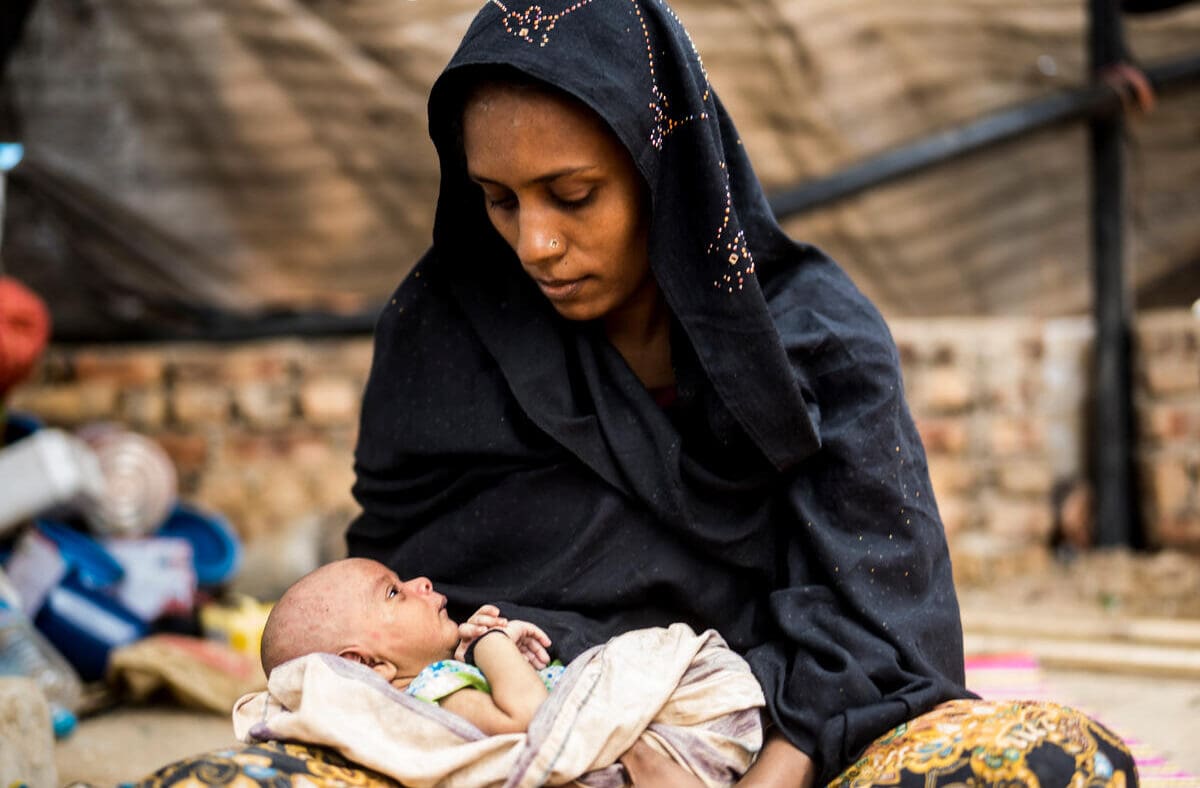
Bangladesh
Help Rohingya Refugees Survive
Bangladesh is home to the largest refugee camp in the world – Cox’s Bazar. Over 80% of the refugees there rely on external aid to survive. WFP is supporting nearly 1 million of them.
Refugees are Fighting for Their Lives
Over five years have passed since violence first erupted in Myanmar – a crisis that triggered a massive refugee crisis as hundreds of thousands of Rohingya fled across the border into Bangladesh. Today, the Rohingya and their host communities in Cox’s Bazar remain highly vulnerable and at high risk of hunger.
Rohingya refugees are in Bangladesh
of Bangladesh’s population is hungry
of refugees rely on external assistance
The Evolution of the refugee Crisis
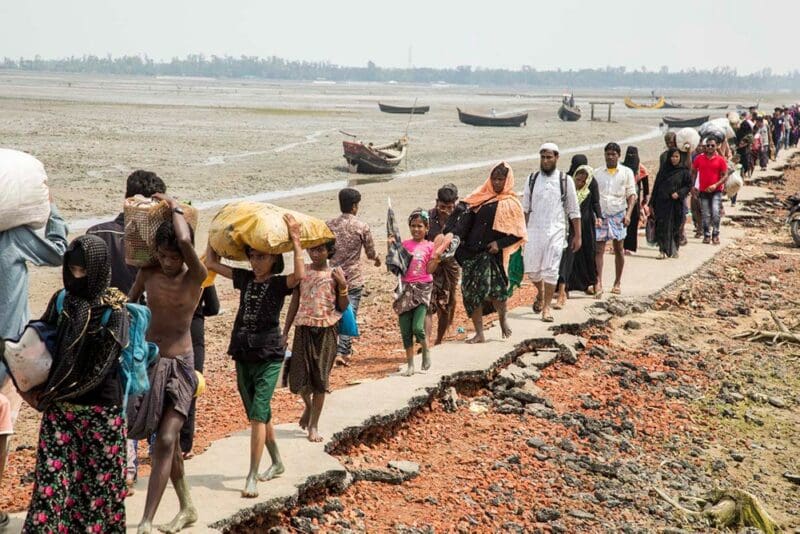
August 2017
The exodus of the Rohingya begins as they flee violence in Western Myanmar.
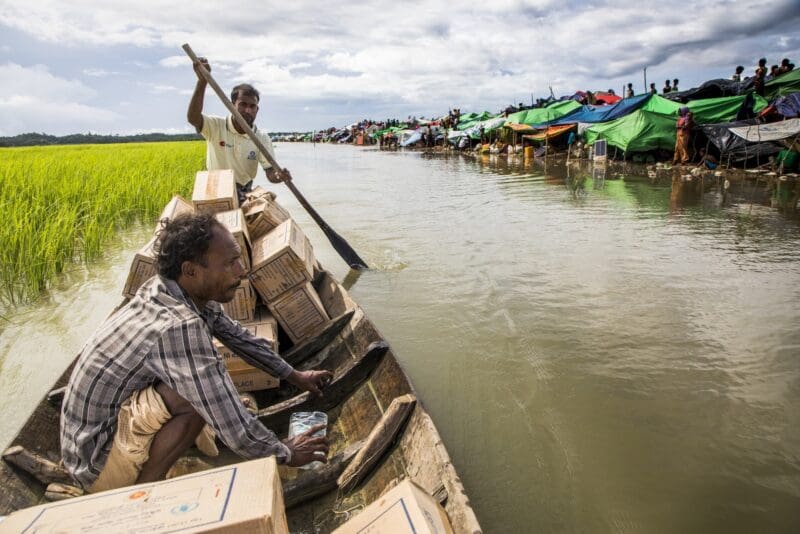
October 2017
Tens of thousands of Rohingya refugees get stuck in no man’s land at the border of Bangladesh and Myanmar.
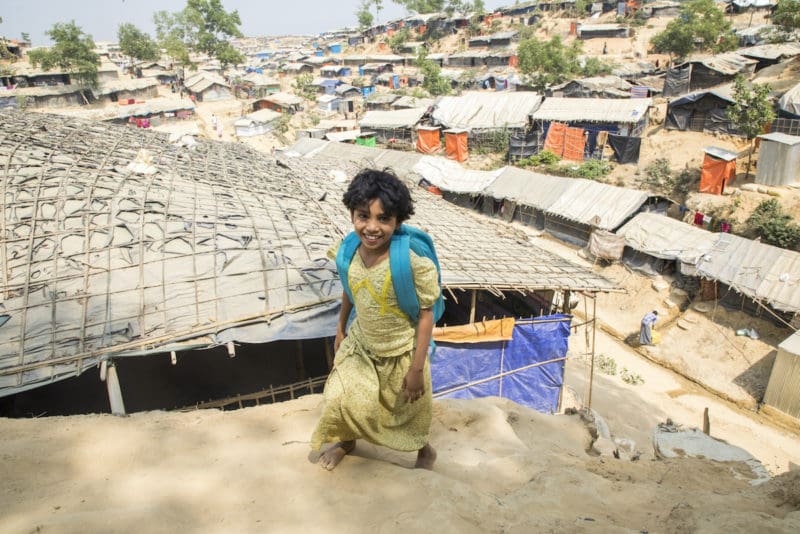
December 2017
The Kutupalong camp in Cox’s Bazar becomes the largest refugee camp in the world, host to more than 900,000 Rohingya refugees.
Photo: WFP/Saikat Mojumder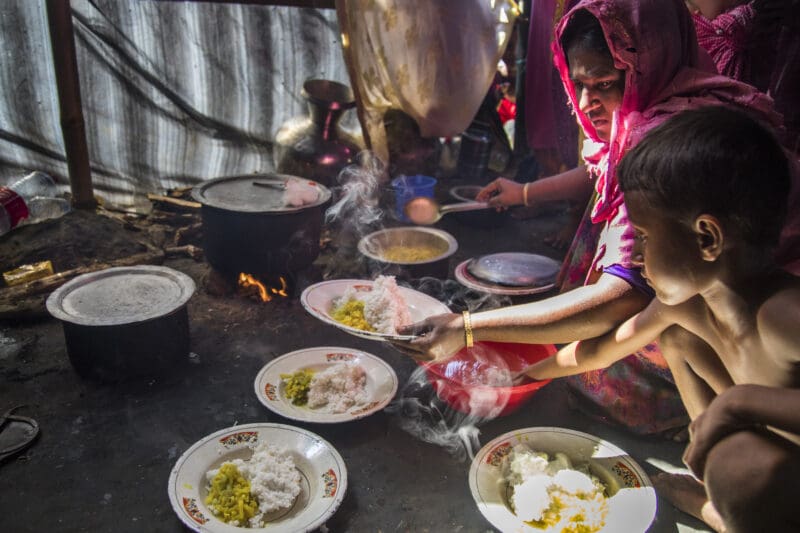
December 2018
More than a year after the crisis began, hundreds of thousands of Rohingya are still unable to return to their homes in Myanmar. Hundreds more arrive every week.
Photo: WFP/Saikat Mojumder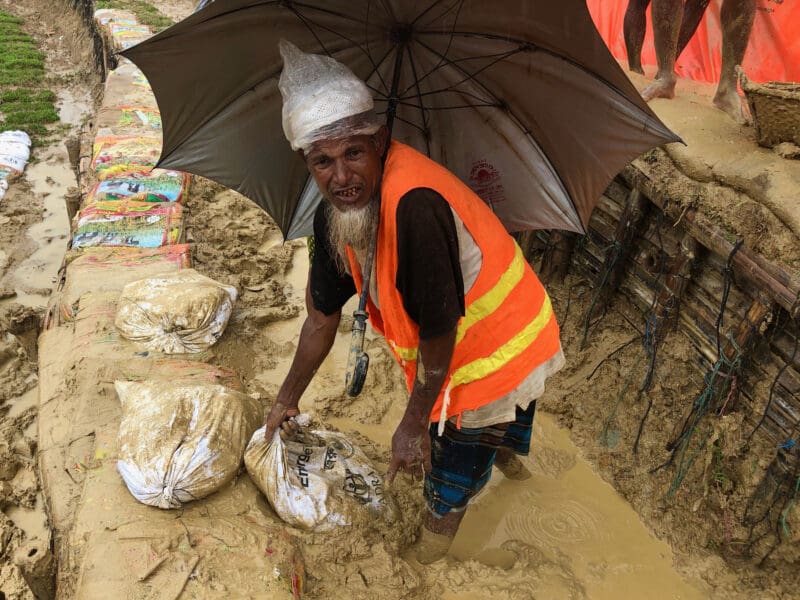
July 2019
This year’s monsoon season strikes, bringing 28 inches of rain in just 10 days. The deluge causes flooding and landslides and wipes away many of the Rohingya’s makeshift shelters. WFP works tirelessly throughout the year to prepare the camp, but still, with such shaky infrastructure, staff must relocate families, provide emergency food and repair the damage.
Photo: WFP/Gemma Snowdon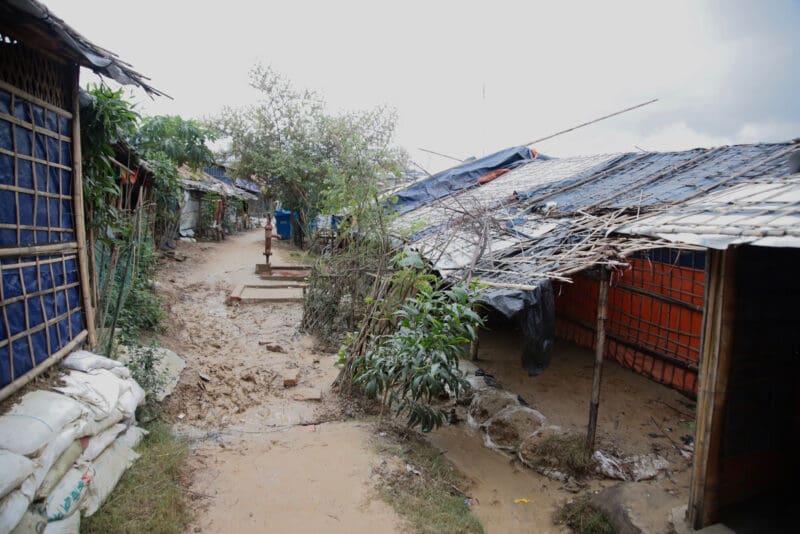
May 2020
In May, Cyclone Amphan tore through Bangladesh and its already vulnerable Rohingya refugee camps. 10 million people were affected across the country, and half a million families lost their homes – straining an already stretched government. The cyclone lashed coastal areas with brutal winds and rain, leaving at least 84 people dead in Bangladesh and India.
Photo: WFP/Gemma Snowdon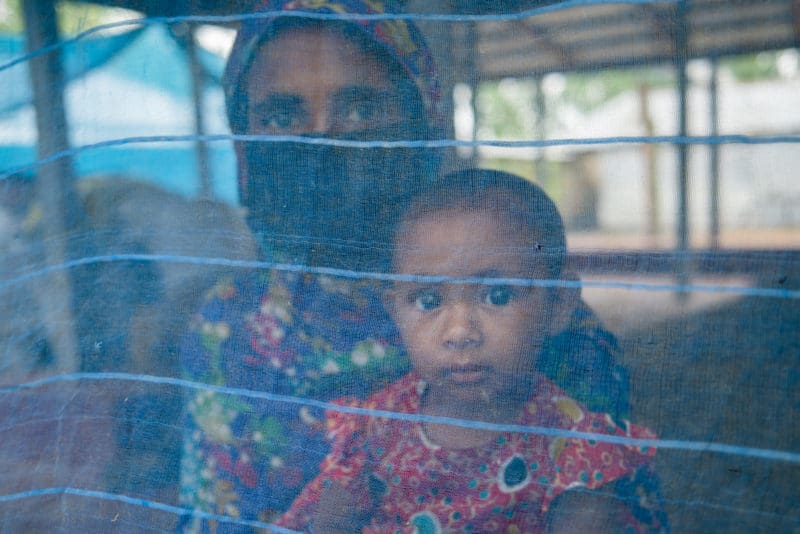
August 2020
August marks a grim anniversary: Three years since the Rohingya were first forced from their homes in Myanmar. Today they are more vulnerable than ever, facing crises within crises. This year’s monsoon season wrecked the makeshift homes of 9,000 families, food prices are even higher, and supply chain disruptions have made the availability of food less reliable.
Photo: WFP/Mehedi Rahman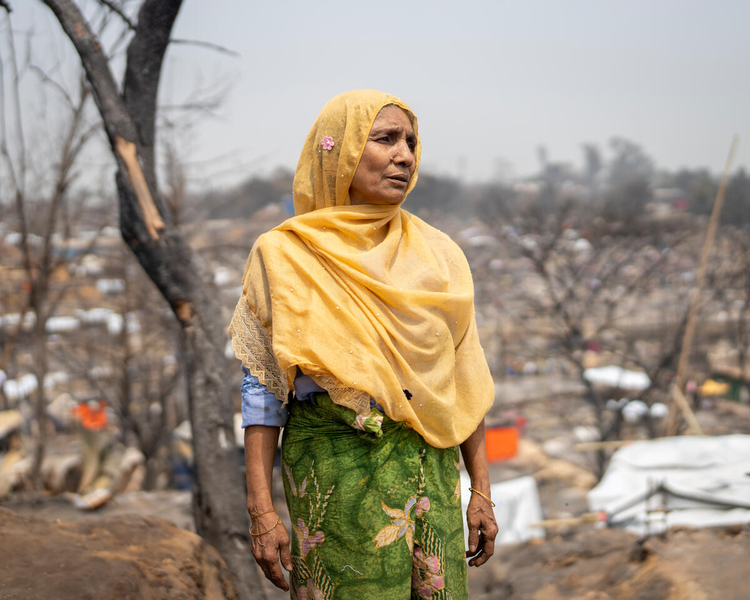
March 2021
A devastating fire that broke out in the Kutupalong refugee camp in Cox’s Bazar affected 92,000 people – 48,300 of whom lost their shelters, belongings. WFP immediately provided emergency rations and hot meals to the evacuated families. Today, Rohingya refugees are more vulnerable than at any point since the 2017 influx – and are entirely dependent on humanitarian assistance to survive. Despite the challenges posed by the pandemic, WFP has scaled up its assistance to nearly 100 percent of the Rohingya population in Cox’s Bazar, providing a food basket from which they can choose what is best for their families.
Photo: WFP/Sayed Asif Mahmud







WFp’s Refugee Response
- 880,000out of 900,000 Rohingya refugees rely on us for food
- 210,000women and children are supported with nutrition services
- 26,000refugees participate in our cash-for-work projects
- 100,000school-aged children receive fortified biscuits

WFP’s Work in Bangladesh
Since the beginning of WFP’s programming in Bangladesh in 1974, we have helped more than 155 million vulnerable and hungry people. Today, WFP is shifting towards a more advisory role by assisting the government in its efforts to achieve Sustainable Development Goal 2 – ending hunger.

Most camp residents get food aid in the form of a voucher, which they redeem at outlets that function like grocery stores, providing rice, lentils, oil, eggs, spices and vegetables. It’s a significant step toward restoring their health and their dignity.

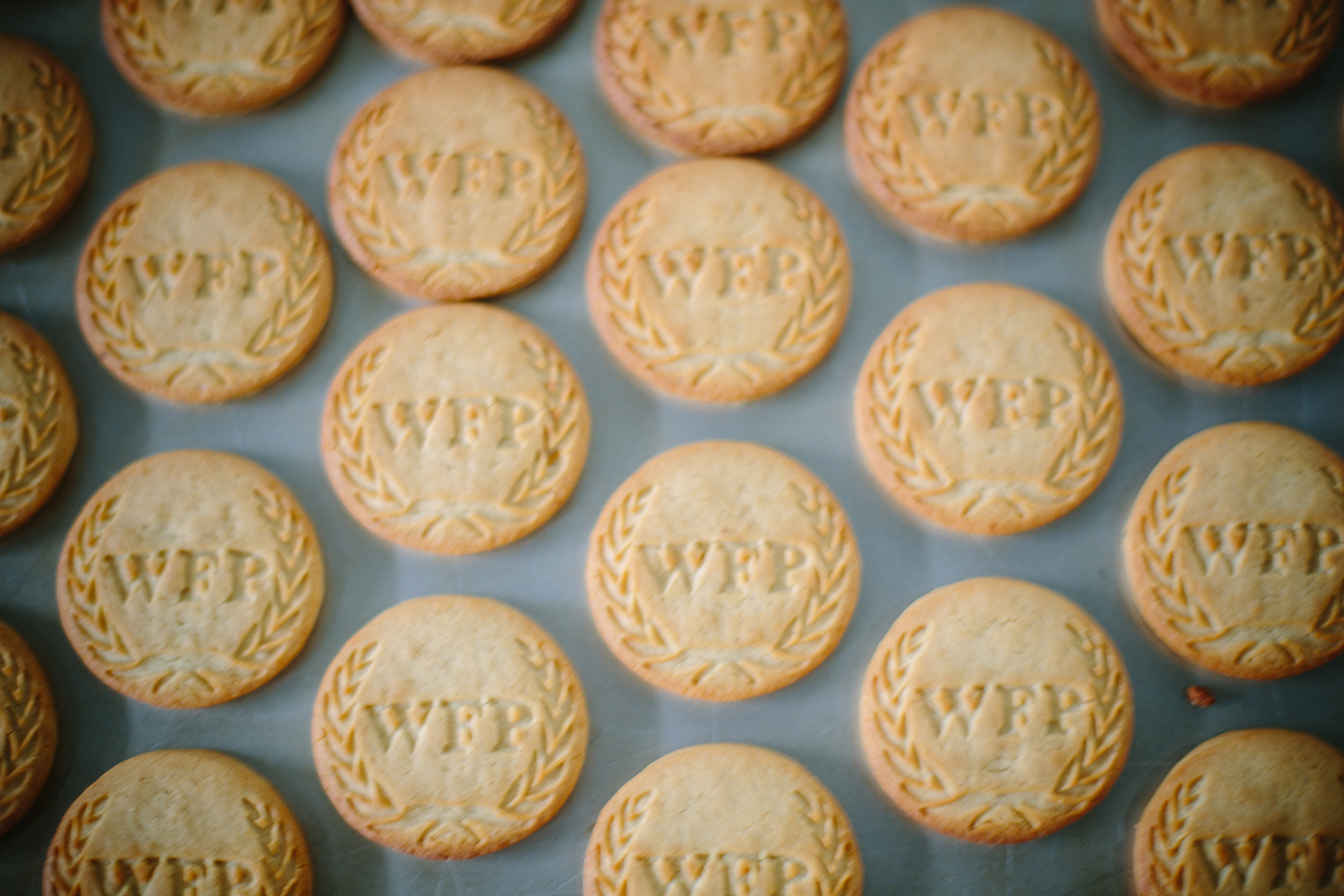
Fortified biscuits are distributed to over 160,000 schoolchildren in camps and host communities through take-home rations. The biscuits are fortified with 15 essential vitamins and contain 450 calories, offering a quick meal in emergencies.

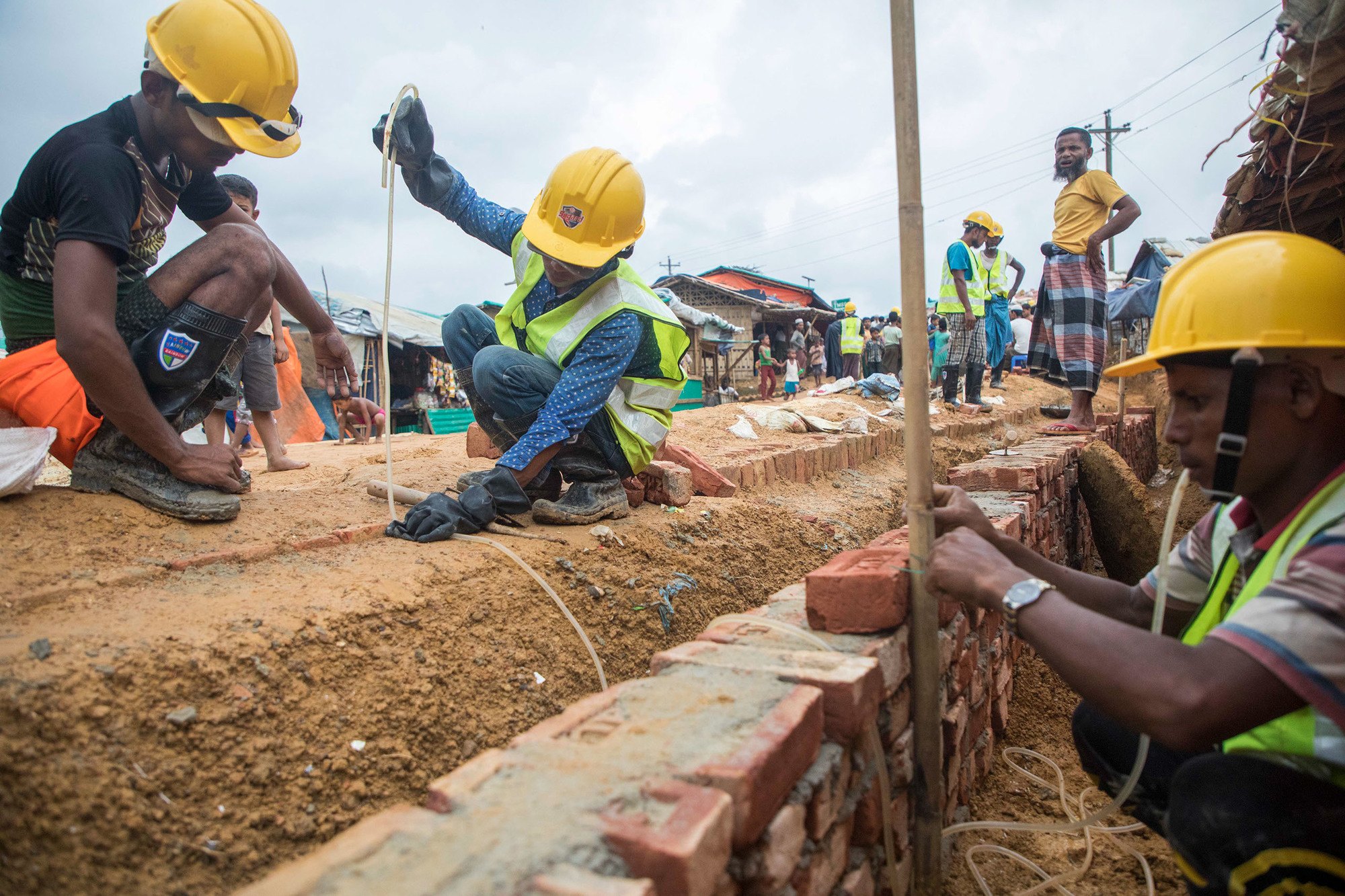
An engineering project between WFP, IOM and UNHCR helped to build safer, new land for refugees living in precarious areas of the camp. Infrastructure is critical for those who are at heightened risk of landslides and flooding.


WFP has prepositioned food stocks that can be deployed immediately when a disaster strikes. In March 2021, WFP was able to assist over 60,000 people affected by a massive fire in the camps within 24 hours – thanks to prepositioned stocks.

BUILDING CLIMATE RESILIENCE
Cox’s Bazar sees one monsoon and two cyclone seasons annually, meaning everyone living in the area is subject to natural disasters for nine months out of the year. WFP works to protect people’s livelihoods from recurrent natural disasters and improve their resilience through projects including the improvement of drainage systems, planting trees and piloting a new fire safety program for the camps.
What’s happening in Bangladesh?
Read the latest stories and news updates from Bangladesh.
Help Save Lives Today
Donate to deliver food to refugees and vulnerable populations in Bangladesh and other countries.


